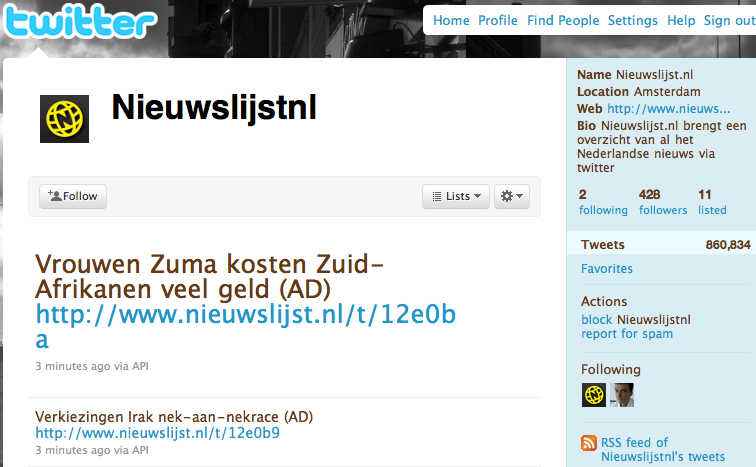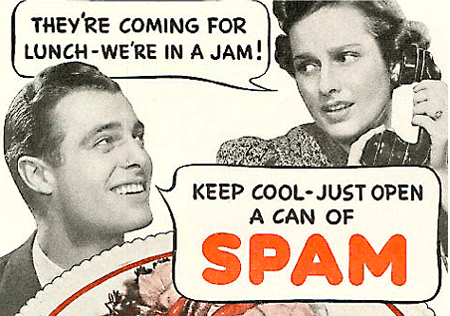 Spam has been an increasing problem on Twitter. As the micro-blogging platform’s popularity goes widespread, so does the amount of spam. Twitter has been infiltrated by an influx of unsolicited advertising, and businesses who are desperate in making a quick buck tend to create multiple accounts and shamelessly promote their products through them.
Spam has been an increasing problem on Twitter. As the micro-blogging platform’s popularity goes widespread, so does the amount of spam. Twitter has been infiltrated by an influx of unsolicited advertising, and businesses who are desperate in making a quick buck tend to create multiple accounts and shamelessly promote their products through them.
Spammers are also using computer to hunt for keywords and sending an @reply to “relevant” usernames. And it’s an eyesore to have these junk displaying in your timeline. In order to generate traffic quickly, sleazy marketers are now exploiting Twitter’s trending topics by including the trending term in as many tweets as they can using dozens of accounts.
Today, we are going to share with you guys some really astounding statistics of spam produced by the top 100 spammers on Twitter.
- 30 million updates published
- 300,000 junk tweets posted on average
- accounts for 0.3 per cent of the total number of tweets (10 billion)
- takes up 40 per cent of the total number of tweets posted each day if all 30 million updates are published on a single day (40 million + 30 million = 70 million) [source Gigatweet]
- Twitter servers could accommodate another 60,000 accounts with 500 updates each after eliminating the 100 spammers
Grabbing data from Twitterholic, a site that ranks the top Twitter users based on number of followers, friends and updates, and punching in some numbers into a calculator, I found out that the number of tweets published by the top 100 spammers with the most updates totals a shocking 30 million…and counting. The account which has the highest number of updates belongs to @Market_JP (1,560,818), followed by @Nieuwslijstnl (880,669), and then @InternetRadio (828,030). And each spammer sends about 300,000 tweets on average.

I believe that most of the accounts listed on the “Top 100 Twitterholics based on updates” are spammers as it’s virtually impossible to post hundreds of thousand of tweets. Let’s assume that they started using Twitter from the day it first launched (March 21, 2006). Dividing 1474 days by 300,000 updates gives me the figure – 203.53. An active genuine user tweets about 20 times each day on average. So how is it possible for a person to publish 200 tweets manually? Unless he or she is hooked on the computer or mobile phone 24 hours, 7 days a week.
Those bots are clearly misusing Twitter’s API, which currently limits up to 100 tweets per hour and some of them are always hitting the maximum.

Twitter recently surpassed 10 billion tweets, and imagine 30 million or 0.3 per cent of them are actually sent by the top 100 spammers based on number of updates. The percentage may seem small but the 100 of them only take up 0.0002 per cent of the entire Twitter population, which is estimated to be around 50 million. That is something hard to believe.

What puzzles me is that Biz Stone & Co. haven’t been taking any action against any of those spammers. Not only they are filling the site with unwanted junk, but also wasting a lot of space in the servers. Taking into account that an active user has 500 tweets on average, Twitter can accommodate another 60,000 accounts after eliminating the top 100 spammers.
However, Twitter has promised to work on reducing the amount of spam and phishing on the micro-blogging platform and one significant feature the engineers have released is its own URL shortener called Twt.tl. With this URL shortener in place, Twitter hopes to prevent the spread of malicious links across the site by checking whether a particular URL leads to a untrustworthy website or not.
Twitter isn’t facing this issue alone. Almost all popular social websites such as Facebook and MySpace are also tackling this worrying problem. Google’s Gmail, too, is trying very hard to cut down the amount of spam its users receive.
Spam is an ever-growing problem and it would not be resolved if each of us don’t play our part in stopping spam. We want a clean and healthy Internet and not one that is constantly filled with trash.